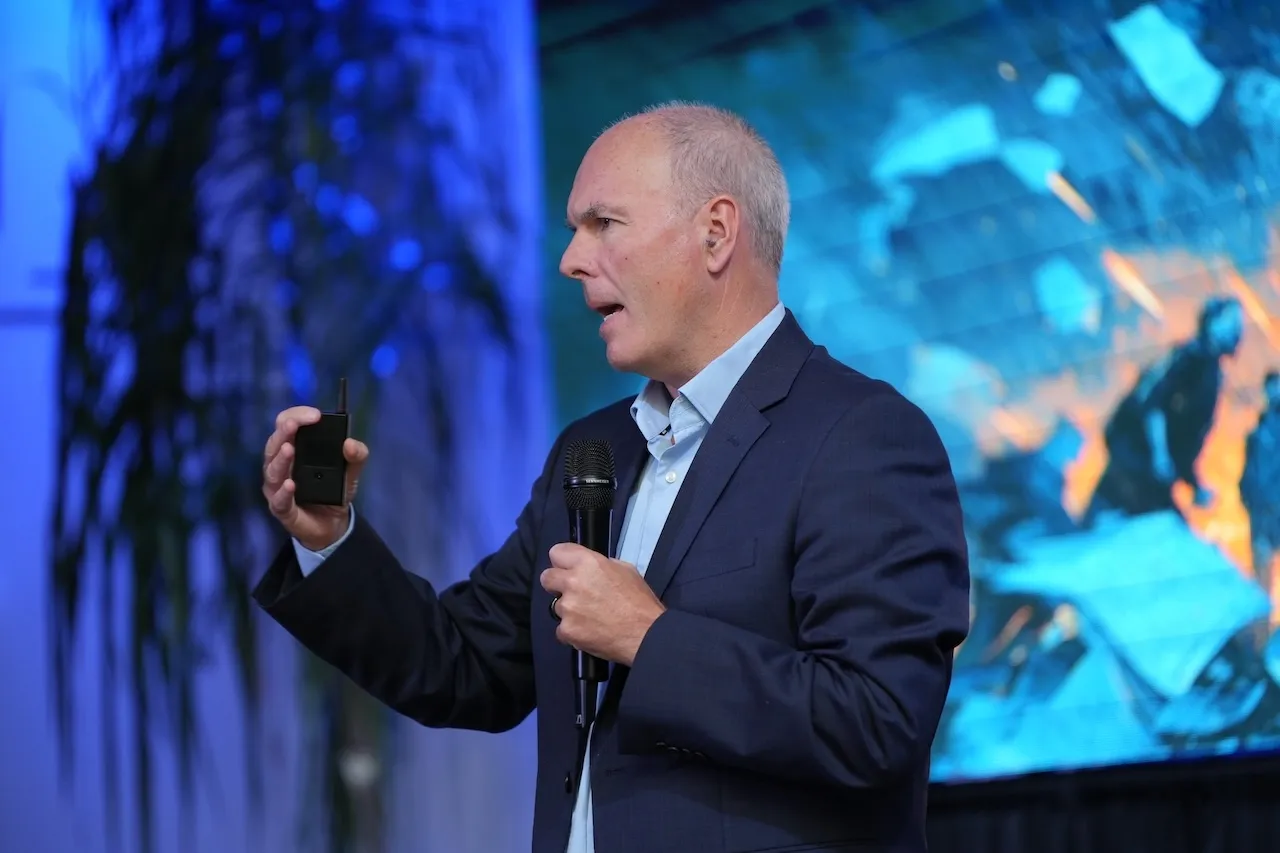AI-powered workplace insights shared by over 1000 AI leaders globally.
Artificial intelligence has officially entered the workplace, and its impact could rival that of the steam engine during the Industrial Revolution. With the rise of large language models (LLMs) and Agentic AI, enterprises have entered into a new era, one where productivity isn’t just accelerated but reimagined through intelligent collaboration.
But as enterprise adoption of AI expands, pressing questions surface: Which AI use cases are genuinely moving the needle? How are teams embedding AI into day-to-day workflows? And what barriers do organizations face when adopting AI for the workplace at scale?
The Kore.ai report, AI Use Cases: Insights from AI Decision Makers 2025, brings fresh clarity to these questions.
Based on insights from 1000+ enterprise leaders, it reveals how AI is being applied across real workplace scenarios in departments like IT, finance, HR, and operations. This blog gives you an inside look at what’s top of mind for global AI leaders—the priorities, challenges, investments, and talent strategies shaping the next phase of enterprise AI.
So let’s dive in.
(About the report:
Surveyed in March 2025 by Paradoxes and supported by Kore.ai, ‘AI Use Cases: Insights from AI Decision Makers – 2025’ reveals how enterprise leaders think about AI, primary use cases, challenges, success metrics, and planning for future AI.
The survey gathered insights from over 1000 senior business and technology leaders across 12 countries, including the U.S., UK, Germany, UAE, India, Singapore, Philippines, Japan, Korea, Australia, and New Zealand. Download the complete report.)
AI for work: A redefinition of productivity
AI at the workplace is no longer just automating repetitive tasks but functions as an intelligent collaborator, actively helping employees across roles and functions. According to the Kore.ai survey, 31% of organizations consider workplace AI the most important use case.
This level of adoption aligns with Gartner’s insight that “Everyday AI supports a new way of working, where it acts more as a collaborator than a tool.”

Industries with high volumes of data or compliance needs, such as insurance, energy, pharma, banking, and healthcare, are at the forefront of AI for workplace adoption. Even industries such as hospitality, telecommunications, and travel, which rely heavily on customer service and person-to-person interactions, are also embracing AI for workplace use cases, but at a slower pace.
Regionally, parts of APAC, particularly South Korea (54%) and the Philippines (33%), and North America (32%), lead in AI for workplace adoption. In contrast, Western Europe (29%), India (20%), and ANZ (20%) lean more towards AI applications in customer service and process automation.
AI for workplace use cases: Where is it driving real value?
As pilots turn into full-scale deployments, a clearer picture is emerging of the use cases that are making a real difference to how work gets done.
The survey breaks down exactly where AI is actively shaping day-to-day work for modern employees:
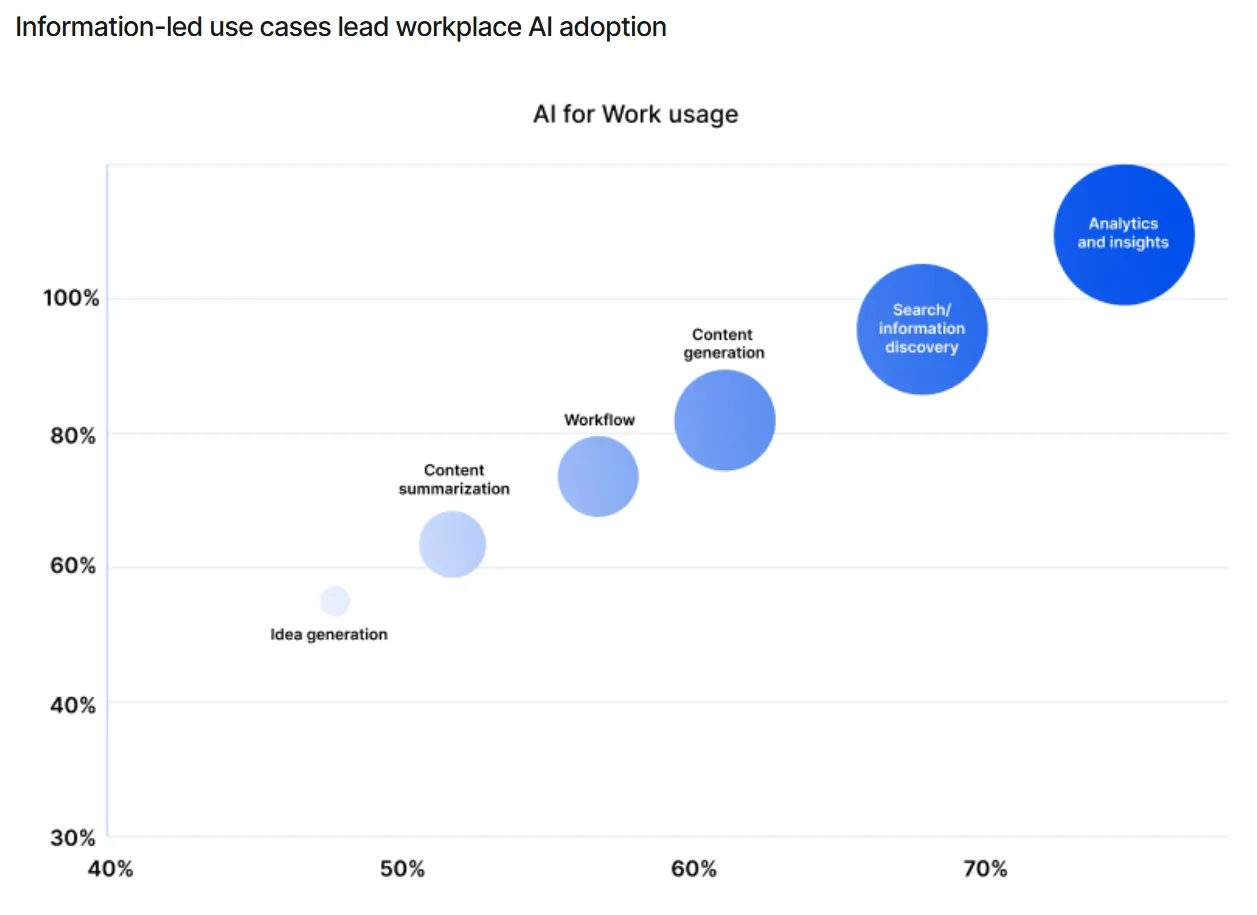
1. AI-powered analytics & insights
This is the most widely adopted use case, with a striking 75% of organizations using AI to uncover actionable data patterns and detect anomalies. This echoes Gartner’s findings that AI for data analytics is a foundational enabler of enterprise decision-making.
2. Search & information discovery
Over 65% of organizations use AI to simplify enterprise search and knowledge access, as it helps them rapidly retrieve relevant documents, policies, and examples.
3. Content generation
61% of organizations use AI to generate content quickly, from drafting emails and proposals to structuring reports and presentations.
4. Workflow automation
58% of organizations use AI to orchestrate repetitive workflows like approval chains, ticket routing, and compliance checks, allowing teams to operate with fewer manual handoffs.
5. Content Summarization
Over 50% of organizations use AI to distill long-form content into digestible summaries, keeping cross-functional stakeholders aligned.
6. Collaborative Ideation
while still emerging, organizations are exploring AI for rapid brainstorming and sparking new ideas, empowering teams to ideate with greater speed and scope.
AI for workplace challenges: What’s holding enterprises back?
While the promise of AI reshaping work is undeniable, many enterprises are still grappling with real-world challenges that slow down implementation and impact. The Kore.ai Use Case report outlines the top roadblocks organizations encounter when implementing AI for the workplace:
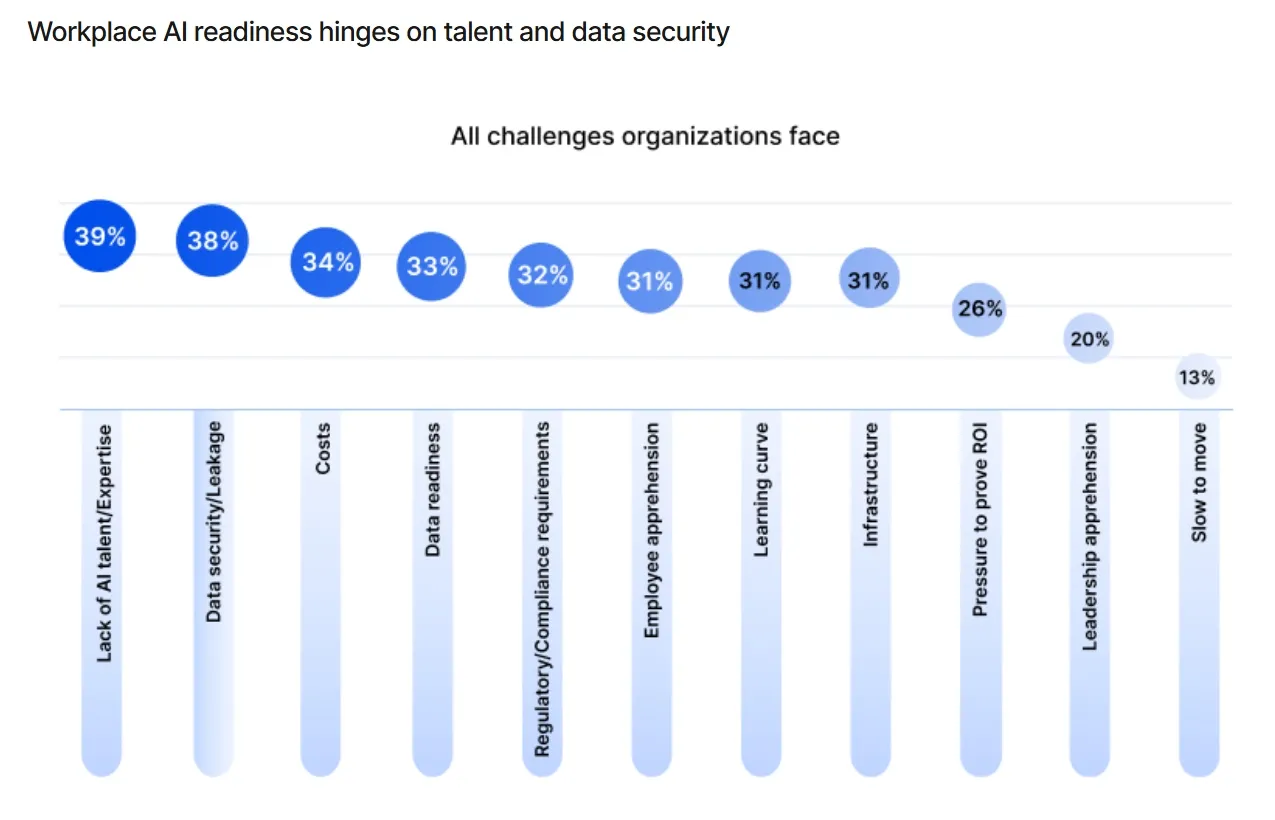
1. Talent gaps
A full 39% of organizations report a shortage of AI-literate professionals capable of deploying, managing, and scaling AI tools across teams. This aligns with findings from McKinsey, which highlights that 46% of enterprise leaders cite skill gaps as a major barrier to AI adoption and they need to reskill their workforce within the next three years to keep pace with AI adoption.
2. Data security & leakage risks
Close behind, 38% of respondents cite data protection as a major hurdle. Implementing AI systems requires access to a vast amount of sensitive enterprise data, raising concerns about security, compliance, and ethical use.
This aligns with Microsoft's report that says, data security is a top challenge, and leaders are hesitant to fully embrace AI until they adopt a stronger data security posture and data governance structure.
3. Cost of LLMs
AI’s transformative potential comes at a price, as they require high computational power and ongoing licensing. According to the survey, 34% of respondents list the cost of deploying LLMs and their supporting infrastructure as a key challenge.
How are enterprises measuring AI for workplace success?
As AI becomes a staple in daily workflows, enterprise leaders are increasingly focused on its real impact. The survey reveals that organizations are holding AI accountable for clear business outcomes and measuring success through an operational lens.
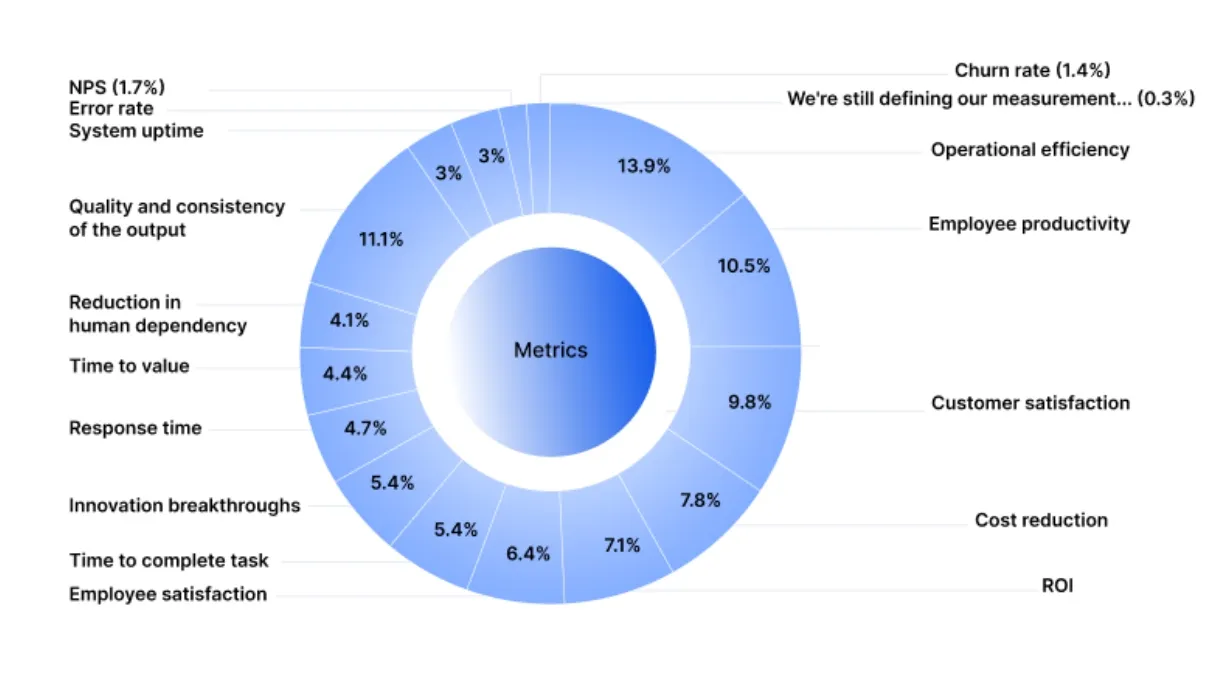
The top success metrics include operational efficiency (13.9%), employee productivity (10.5%), and output quality and consistency (11%). These indicators reflect a shift away from experimental hype toward outcome-driven deployment.
Rather than evaluating AI in isolation, enterprises are asking: Are our processes faster and more accurate? Are teams focusing on strategic tasks? Is AI-generated output consistently meeting expectations?
McKinsey’s ‘AI in the workplace’ report reinforces this by noting that enterprises scaling AI are prioritizing measurable gains in speed, quality, and human output, not hype.
Lessons learned: What early AI for work projects reveal
With early AI deployments now yielding mixed results, many organizations are recalibrating their approach by turning past lessons into next steps.
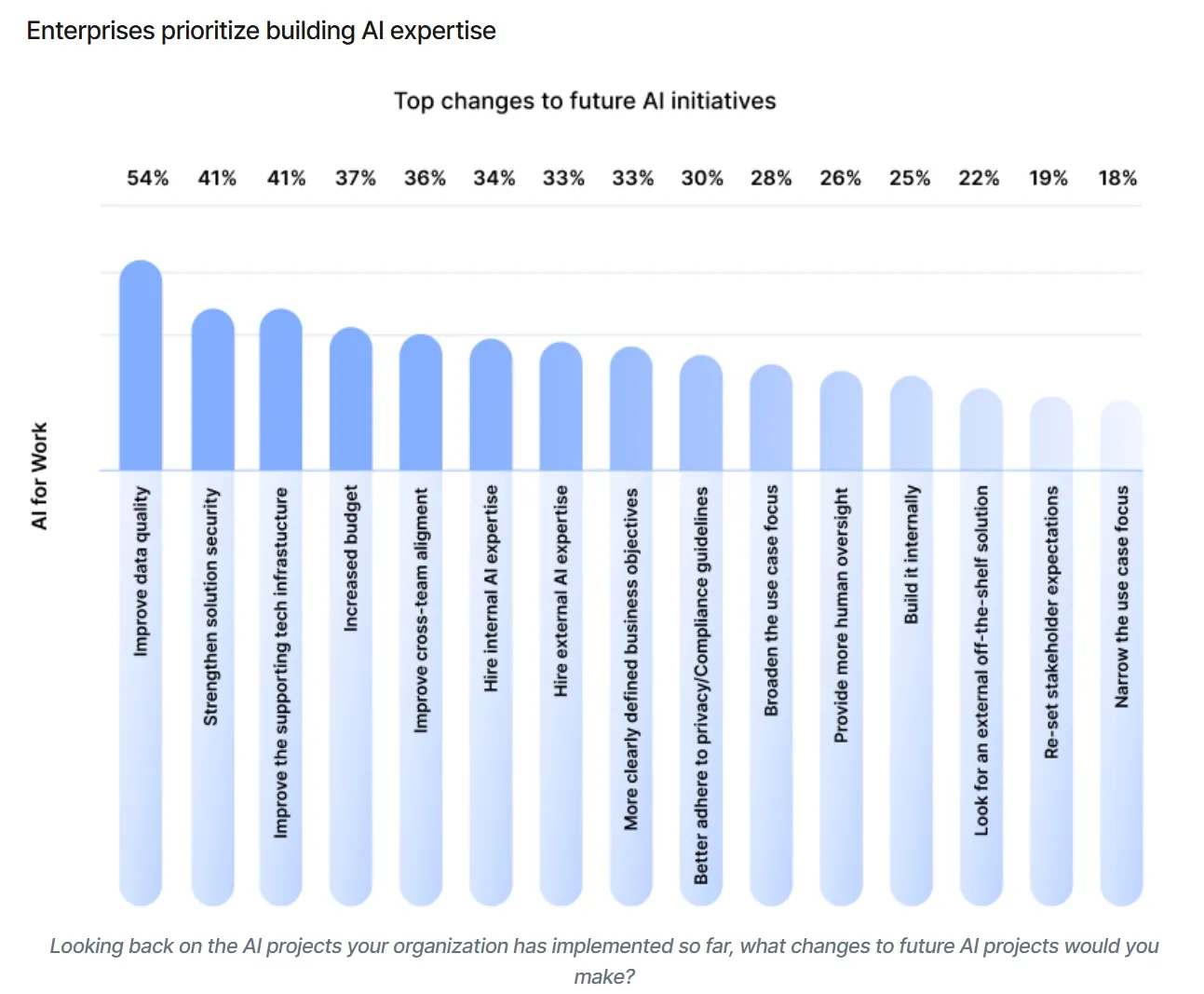
When asked, “Looking back on AI projects, what changes in future projects would you make?” 67% of respondents cite that they plan to strengthen AI expertise, with 34% focusing on internal upskilling and 33% hiring external talent. This shift underscores the growing need for AI fluency across business and technical teams—a foundational requirement for scale.
Beyond talent, 54% of the respondents aim to improve data quality, while 40% cite the need to enhance solution security and underlying technology infrastructure.
These learnings signal a broader shift: from building prototypes to building readiness for scale.
Investment outlook: AI for the workplace is gaining ground
Despite early adoption hurdles and a steep learning curve, enterprise conviction around AI for workplace use cases remains robust. According to the survey, 89% of organizations plan to increase investment in AI for workplace use cases over the coming months, while 9% expect spending to remain steady, and only 1% plan to scale back.

This upward trajectory is supported by a McKinsey study showing that, over the next three years, 92 percent of companies plan to increase their AI investments – a dramatic rise that signals growing trust in AI’s business impact.
Final thoughts: AI for the workplace is just getting started
If there’s one thing this research makes clear, it’s that AI is becoming a core part of how organizations operate. From budget expansion to scaled deployments, leaders are signalling strong conviction in AI’s ability to drive measurable workplace impact.
But confidence comes with responsibility.
As organizations invest in tools, talent, and infrastructure, they also face growing expectations around security, performance, and ROI. The real differentiator will be how enterprises embed Agentic AI, not just into systems, but into everyday decision-making and execution.
This blog only captures key highlights. The full Kore.ai use case report goes much deeper, exploring how top-performing organizations are translating AI potential into scalable performance.
FAQs
Q1. What is AI for the workplace?
AI for the workplace refers to the use of AI to augment how employees work, collaborate, and make decisions. It acts as an intelligent collaborator that analyzes information, generates content, summarizes data, and streamlines workflows across departments. In essence, AI for workplace is about reimagining productivity through intelligent, context-aware assistance.
Q2. What are some examples of AI for the workplace?
Enterprises are deploying AI across a wide spectrum of daily work activities. Common use cases include:
- AI-powered analytics and insights: uncovering trends and improving decision-making.
- Search and information discovery: helping employees instantly find relevant documents or data.
- Content generation and summarization: drafting emails, proposals, presentations, and content or summarizing lengthy content and meetings into key takeaways.
- Workflow automation: orchestrating repetitive processes like approvals, ticket routing, and compliance checks.
- Collaborative ideation: supporting brainstorming sessions by generating new ideas and perspectives.
Q3. How is Agentic AI transforming the workplace?
Agentic AI is redefining the modern workplace by turning AI systems into autonomous, contextually aware collaborators. Unlike traditional automation, Agentic AI can reason, plan, and act independently, anticipating employee needs and taking action without being explicitly instructed.
For example, an AI agent might summarize a team’s project updates, draft a progress report, or proactively schedule follow-up meetings. This allows employees to focus on higher-value strategic work, while AI manages the operational rhythm.
Q4. What are the benefits of using AI for the workplace?
AI delivers measurable improvements across enterprise workflows and employee experience. Key benefits include:
- Automates time-consuming tasks
- Provides actionable insights
- Reduces human error
- Frees teams to focus on strategy and innovation
- Helps businesses adapt faster
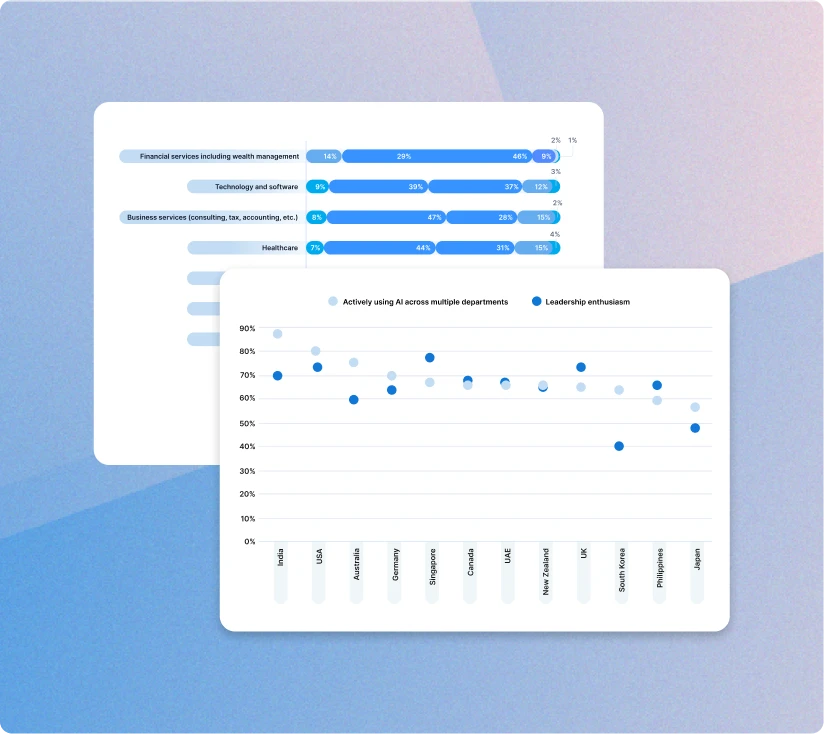


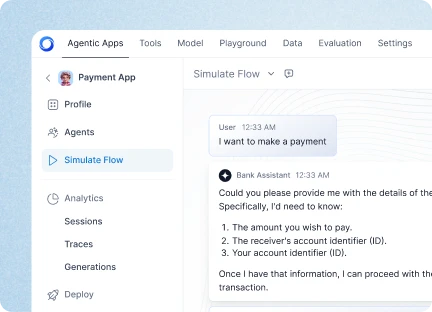
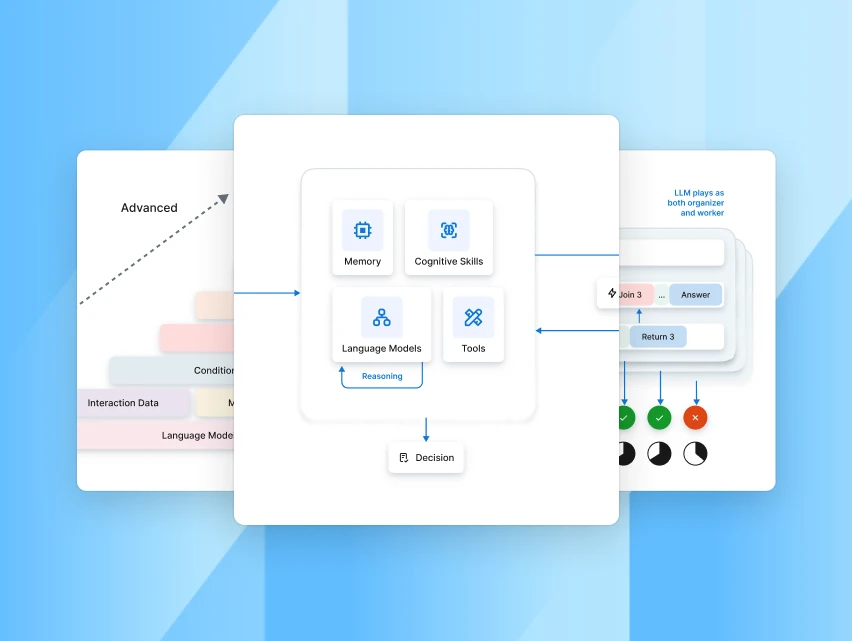

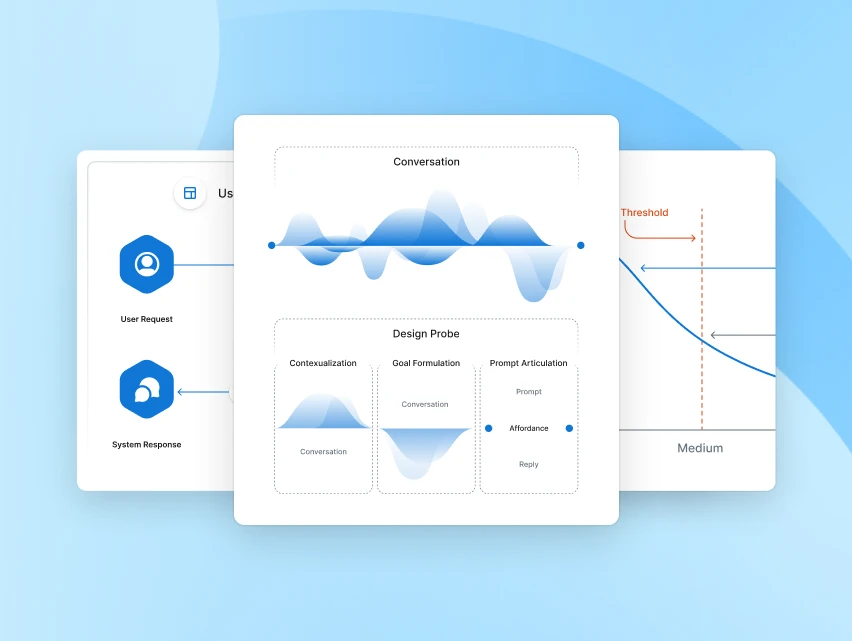
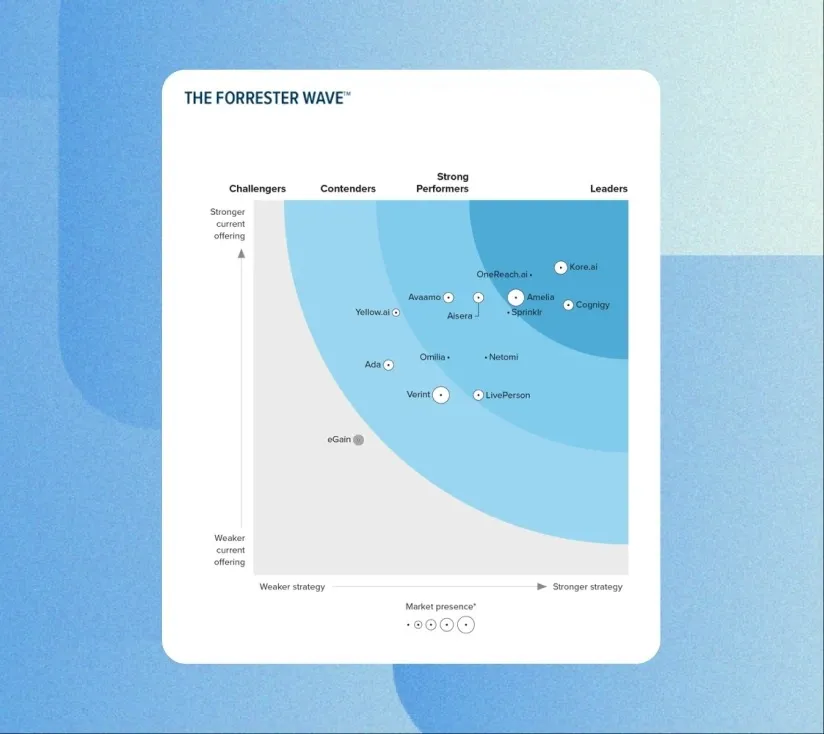


.webp)
.jpg)




